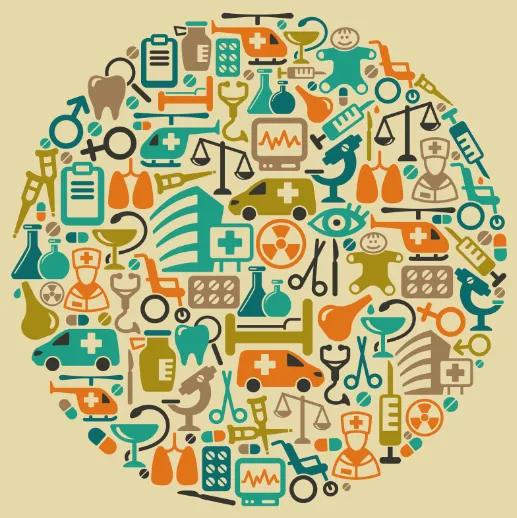Table of contents
Medical Transcription: 5 Tricks to Improve Your Skills

Table of Contents
Do you want to improve your medical transcription skills? If you are a medical transcriptionist or perform medical transcription as part of your job converting audio statements from doctors and medical professionals into written form as a medical administrative assistant, these five tips can help.
#1: Focus on One Sentence at a Time
Have you ever had a conversation where you lost focus and your mind jumped ahead instead? When this occurs, you can miss important details or lose track of information. If you aren’t careful, the same can happen when transcribing medical data.
Instead of anticipating what’s coming next in the audio recording, focus on transcribing one sentence at a time. Consider each sentence a separate block of information. This can help prevent you from inadvertently omitting information because your brain jumped ahead. It can also create a more accurate dictation since you’re paying attention to each word as you transcribe.
2 ways to build this medical transcription skill:
Build self-awareness.
If you notice your mind start to wander while transcribing medical information, bring it back to where you are now. Stay in the present and strive to take in information only as it is provided.
Take regular breaks.
This gives your brain some downtime to relax and regroup. Set a timer to go off every 30–60 minutes to remind yourself to walk away from your transcription for a moment or two. Go for a walk around the block, do some light stretches, or simply step outside and get some fresh air. It doesn’t matter what you do, only that you give your mind a little break every so often.
#2: Prioritize Accuracy Over Speed
Transcribing quickly is beneficial to finish more in less time. However, transcribing medical information accurately is critical because transcribing incorrectly could negatively affect patient care.1
Imagine you’re a patient who is prescribed a medication to help you feel better, but the person transcribing your charts was more concerned with speed over accuracy. This could prove not only frustrating, but also delay effective treatments. If the wrong medication is transcribed, it could even be dangerous.
Your accuracy as a medical transcriber may also impact your professional credibility. If healthcare providers can’t trust that their words are transcribed precisely, they may choose to hire a different transcriptionist — one who provides a greater level of care and attention.
2 ways to build this medical transcription skill:
Check your error rate.
Transcribe for 5–10 minutes, and then go back to see how many errors you have. If there are a lot of mistakes, it might be time to slow down and pay more attention to the information you’re writing.
Notice if you’re feeling hurried or anxious.
If you’re typing so fast that you feel stressed, focus on consciously slowing yourself down. Take a couple of deep breaths, relax your shoulders, and start to work again. Playing music with a moderate tempo (90–120 beats per minute) can also help you keep a steady typing rhythm.2
#3: Learn Medical Terminology
The Bureau of Labor Statistics reports that, along with knowing grammar rules, anatomy, and physiology, medical transcriptionists must know basic medical terminology.3 Learning this terminology can provide insight into terms you might be translating from voice to text. It also helps you better understand what you may be tasked with transcribing, potentially making it easier to assess whether you are working accurately.
Admittedly, learning medical terminology may feel easier said than done simply due to the sheer number of words that can be used in this field. While you don’t have to know all of them, being familiar with the ones that may be used more often is a great place to start.
2 ways to build this medical transcription skill:
Review online medical terminology lists.
Ultimate Medical Academy (UMA) has published a few of the terms relevant to billing and coding. This enables you to review what aging means (hint: it has to do with the age of a bill versus the age of a patient), what a deductible is, and how scrubbing is a process that involves checking claims for errors and isn’t just what doctors do to get ready to perform a surgical procedure.
Take a course that teaches this type of information.
Many of UMA’s healthcare programs include some type of medical terminology course. This provides learners with access to the words and phrases they’re most likely to encounter when working in the healthcare field.
#4: Ramp Up Your Typing Speed
Once you can transcribe accurately, the next step is to work on improving your typing speed. This can help you complete your work faster. If medical transcription is only one of your job responsibilities, such as if you’re a medical administrative assistant, it enables you to move on to your other required duties more quickly. Being a fast medical transcriber without sacrificing accuracy may even help you stand out against others in your field, whether in terms of on-the-job performance or as a potential job applicant. Either way, it may be noticed by employers.
2 ways to build this medical transcription skill:
Keep practicing.
Generally speaking, the more we practice something, the faster we get at it. So, if you’re new to medical transcription, your speed will likely increase as you gain more experience. To monitor your progress, take an online typing test today and use it as a baseline. Every few weeks, retake the test to see whether you’ve improved in speed without sacrificing accuracy.
Learn how to touch type.
Ratatype (an online typing tutor) explains that this is “the idea that each finger has its own area on the keyboard.”4 Touch typing involves teaching your fingers which letters and symbols they are responsible for. Ratatype also suggests not looking at the keyboard when you type, keeping your hands in the same relative position, and paying more attention to the ring and little finger since these two digits are “considerably underdeveloped.”4
#5: Check Your Work With a Critical Eye
Like with any type of writing, proofreading what you’ve transcribed provides the opportunity to correct mistakes before submitting the final product. Remember that the information you are transcribing is important, and a mistake can be costly to a patient’s health.1 Your accuracy helps keep their medical records accurate while also ensuring they have the information needed to take the next steps in their healthcare.
Re-checking your work can also help shine a light on medical transcription skills that you may need to further develop. If you have a lot of errors because you’re feeling stressed, for instance, you can work to slow down your typing so you don’t make as many mistakes.
2 ways to build this medical transcription skill:
Speak the transcribed words out loud.
When checking your work, read it out loud word for word. This makes it easier to notice when words may be missing or if they’ve been input in places they don’t belong.
Combine your knowledge with common sense.
Ask yourself if what you’ve written makes sense. This is where it’s helpful to know basic medical terminology. The better you understand what a word, phrase, or abbreviation means, the easier it becomes to notice if it is used appropriately or if you wrote one word but meant another, potentially changing the meaning or the advice of the information transcribed.
Want to Build Your Medical Transcription Skills?
These are just a few tips to help you build upon your skills as a medical transcriptionist. Another option is to enroll in an educational program designed to equip you with the knowledge needed to perform medical transcription. Courses that cover medical terminology, healthcare communication, anatomy, physiology, and other topic areas relevant to this healthcare role are a great start.
UMA offers two options that can assist with this: a Medical Administrative Assistant Diploma program and a Health Sciences – Medical Administrative Assistant Associate of Science Degree program. Both can be completed online5 and prepare you to sit for the Certified Medical Administrative Assistant (CMAA) exam, if eligible.6
Contact us to learn more or to discuss your healthcare training options!
FAQs
What is medical transcription?
Medical transcribers take a healthcare professional’s audio recording and turn it into written text.
What does a medical transcriber do?
Exact duties can vary, but medical transcribers may dictate audio recordings to help healthcare professionals update medical records, create visit reports, develop discharge instructions, and more.
What are medical transcription skills?
In addition to being able to transcribe audio recordings quickly and accurately, a medical transcriptionist benefits from having critical thinking, listening, writing, and time management skills.3
What are my medical transcription education options?
Some training programs teach you how to become a medical transcriptionist. Another option is to pursue training for a healthcare role that includes medical transcription. For instance, UMA has a medical transcription course in its two medical administrative assistant programs: a Medical Administrative Assistant Diploma program and a Health Sciences – Medical Administrative Assistant Associate of Science Degree program. Taking this course in either program helps you build your transcribing skills for a medical administrative assistant role.
1 Elhadad, A., et al. Advancing Healthcare: Intelligent Speech Technology for Transcription, Disease Diagnosis, and Interactive Control of Medical Equipment in Smart Hospitals. AI. https://www.mdpi.com/2673-2688/5/4/121
2 TypeTest.io. Typing Tunes: How Music Affects Your Keyboard Speed. https://typetest.io/blog/posts/2024-11-07-typing-tunes-how-music-affects-your-keyboard-speed.html
3 Bureau of Labor Statistics. Occupational Outlook Handbook. Medical Transcriptionists. How to Become a Medical Transcriptionist. https://www.bls.gov/ooh/healthcare/medical-transcriptionists.htm#tab-4
4 Ratatype. Learn How to Touch Type. https://www.ratatype.com/learn/
5 Coursework is online except for an on-site externship/practicum in select programs.
6 Learners must meet eligibility criteria to sit for applicable certification exams.
Request Information
Talk with us. Start your journey.
Complete this form and we'll call you to explore options at UMA and answer your questions. We'll also email you info on how to get started. We're with you at every step!
Request Information
Talk with us. Start your journey.
Complete this form and we'll call you to explore options at UMA and answer your questions. We'll also email you info on how to get started. We're with you at every step!
About the Author
 Adam Fenster
Adam FensterAdam Fenster is a senior copywriter at Ultimate Medical Academy, with journalism experience from his time as a reporter and editor for multiple online and print publications. Adam has been covering healthcare education since 2019, with an emphasis on topics such as wellness, healthcare employment, and job preparedness. He received his BA in journalism from the University of South Florida.
Related Content


6 Vital Nursing Assistant Communication Skills and How to Improve Them
Read More